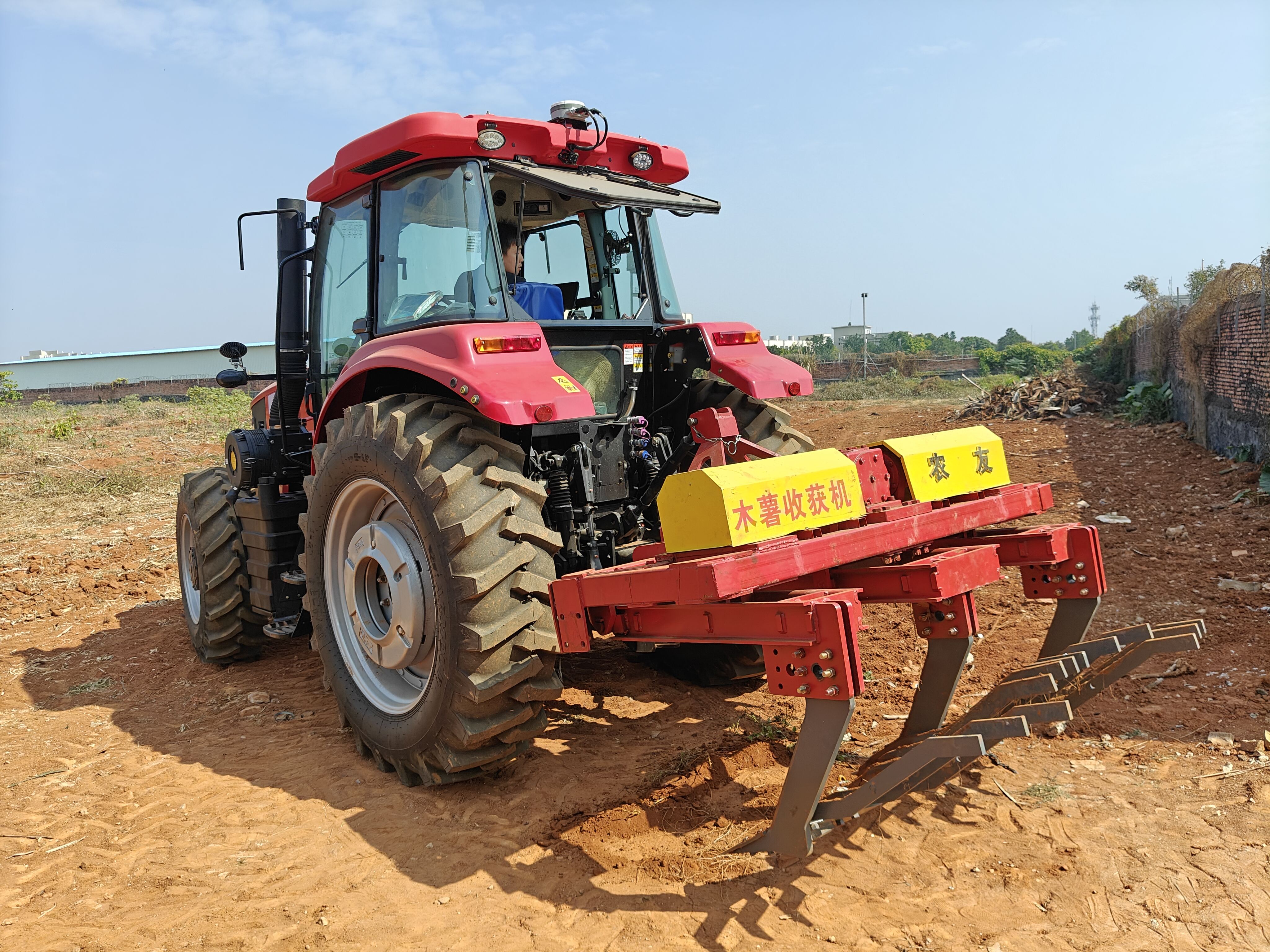Manual Rice Transplanters for Small-Scale Farming
Walk-Behind Two-Row Transplanters: Compact Solutions for Terraced Fields
The walk-behind two-row transplanter represents an ideal solution for small farms, particularly those located in terraced fields. Its compact design allows farmers to operate efficiently in tight spaces and irregular terrain. The key benefits of walk-behind models include ease of use and maneuverability, which are essential characteristics when navigating terraces. Recent advancements in these models often feature lightweight materials and ergonomic handles, enhancing comfort and reducing physical strain for users.
Incorporating lightweight materials not only makes the transplanter easier to transport but also minimizes the effort required during operation. Additionally, improvements such as adjustable row spacing enable farmers to customize planting according to specific field conditions. This ability to easily adapt to varied terrains ensures consistent performance in small-scale farming, maximizing planting precision and efficiency.
Four-Row Manual Models: Balancing Efficiency and Affordability
Four-row manual transplanters offer a balance between efficiency and affordability, making them a popular choice among small to medium-scale farmers. These models are known for their ability to plant multiple rows simultaneously, significantly improving planting efficiency over smaller models. By reducing the time needed to cover larger areas, four-row transplanters help optimize labor costs and productivity.
User reviews often highlight the cost-effectiveness of four-row manual transplanters in diverse terrains. Expert opinions emphasize their reliability, noting how these tools consistently perform well across different farming conditions. While initial investment might be higher compared to two-row models, the long-term benefits, including higher productivity, justify the expenditure.
Traditional Paddy Transplanters: Regional Adaptations and Features
Traditional paddy transplanters have been adapted over time to suit various regional farming practices, reflecting the significant role of cultural and environmental factors in their design. These machines are crafted to meet the unique requirements of paddy fields, which often differ in soil texture and water retention compared to other agricultural lands.
The historical context of traditional transplanters reveals their evolution from basic manual tools to models incorporating modern ergonomics and materials. While maintaining their original purpose of aiding farmers in wet and muddy conditions, today's traditional transplanters are designed to reduce physical strain, ensure uniform planting, and accommodate regional preferences. This fusion of historical and modern features underscores their importance in today’s agricultural practices.
Mechanized Riding Transplanters for Mid-Scale Operations
Six-Row Riding Transplanters: Power and Precision Combined
Six-row riding transplanters offer a balance of power and precision that significantly enhances mid-scale farming operations. These machines are equipped with strong engines, boosting planting efficiency and enabling farmers to cover substantial areas quickly. The robust engine ensures not only efficiency but also precision in planting, relieving farmers from manual errors and resulting in uniform plant growth. Performance metrics and case studies have shown that these transplanters greatly increase productivity by performing simultaneous multi-row planting with remarkable accuracy. For instance, many users report a notable improvement in planting precision compared to manual techniques, attributing higher crop yields to the adoption of six-row systems.
For more information on six-row riding transplanters, explore our detailed resources about these impressive machines.
Eight-Row Paddy Specialists: Increasing Daily Planting Capacity
Eight-row paddy transplanters are designed to maximize output, particularly beneficial for extensive medium-sized farms aiming to elevate daily planting capacity. These models have a proven impact on efficiency, enabling farmers to handle more substantial fields faster than before. Enhanced features like reduced vibration and increased comfort for operators are integral to these machines, which improve the user experience significantly. Statistics indicate a sharp increase in operational planting rates, attributing this capacity to technological advancements that prioritize user comfort alongside productivity. By implementing such systems, farms can streamline operations and boost overall plantation efficacy, maintaining quality while increasing volume.
For additional details on eight-row models and their productivity benefits, delve into our comprehensive guide.

Hydraulic Depth Control Systems in Modern Riding Models
Hydraulic depth control systems are integral to modern riding transplanters, providing refined precision in rice planting. These advanced systems utilize hydraulic mechanisms to adjust planting depth, ensuring seeds are consistently positioned at the optimal level. Technical explanations of these systems reveal their superiority over traditional methods, offering more precise control and adaptability to varying soil conditions. Compared to conventional depth control techniques, hydraulic systems enhance the planting process, making it more effective and reliable. This technological innovation guarantees consistent seedling growth by maintaining ideal depth, thereby improving yields and overall farm productivity.
Discover how hydraulic depth control systems revolutionize planting precision in our technical overviews.
Self-Propelled Transplanters for Large Estates
Ten-Row GPS-Guided Units: Pinpoint Accuracy Planting
Ten-row GPS-guided rice transplanters revolutionize large-scale farming by offering enhanced precision and efficiency. Integrating GPS technology into these units allows farmers to achieve pinpoint planting accuracy, which maximizes land use while minimizing overlaps. This cutting-edge technology ensures that every inch of available land is utilized effectively, enhancing productivity. The benefits of using GPS-guided transplanters are not merely theoretical; in practice, farmers have reported significant statistical improvements in yield. For instance, some operators have observed a 15% increase in crop yield due to optimized planting patterns. By employing these advanced systems, large estates can streamline their operations and achieve superior outcomes.
Laser Leveling Integration for Flooded Field Conditions
Laser leveling is crucial for optimizing flooded fields, and its integration into self-propelled transplanters marks a significant advancement in agricultural technology. This innovative approach ensures the field maintains a consistent level, which is essential for effective water management and promoting healthy crop growth. Technically speaking, laser leveling involves the use of precision instruments that guide the transplanter in maintaining the desired field gradient. The impact of integrating laser leveling into transplanters is profound, as it helps prevent uneven water distribution and soil erosion. Ultimately, this leads to improved water conservation, a vital aspect of sustainable farming. Farmers have experienced better crop health and higher yields by leveraging this technology.
High-Capacity Seedling Trays and Automatic Feed Systems
High-capacity seedling trays and automatic feed systems are game-changers in the realm of rice transplanting, particularly for large estates. These trays are designed to hold more seedlings, thereby enhancing planting efficiency and reducing downtime. Moreover, automatic feed systems substantially reduce labor costs by eliminating the need for manual feeding, thus increasing planting speed. By automating the feeding process, these systems allow for continuous and precise seedling placement, which ensures optimal planting conditions. Comparative data has shown that estates utilizing these features experience remarkable improvements in efficiency, often surpassing traditional methods by a wide margin. This transition to automated systems represents a strategic move towards more productive and cost-effective farming practices.
Emerging Technologies in Rice Transplanters
Hybrid Electric Models: Reducing Fuel Costs and Vibration
Hybrid electric rice transplanters are transforming sustainable agriculture by offering significant advantages over traditional models. These machines leverage advanced hybrid electric technology to decrease fuel consumption and operational noise, promoting eco-friendly farming practices. By reducing fuel costs, they offer farmers substantial savings, while minimizing vibration enhances operator comfort and precision planting. Evidence from various trials has consistently illustrated the lower environmental impact of hybrid models, making them a worthwhile investment for farmers seeking to reduce their carbon footprint. Farmers have reported improved crop health and yield, ensuring that sustainability doesn't compromise productivity. These benefits make hybrid electric transplanters a pivotal tool in modern agriculture focused on preserving resources for future generations.
Drone-Mounted Transplant Heads: Revolutionizing Waterlogged Fields
In the quest for innovation, drone-mounted transplant heads have emerged as a groundbreaking solution for rice planting in challenging waterlogged field conditions. Utilizing drone technology, these transplant heads can efficiently navigate through flooded areas, thereby overcoming the limitations posed by traditional equipment. The mechanics involve precise maneuverability and adaptable transplanting techniques, ensuring seamless operation even in vulnerable terrains. Several case studies from regions experiencing recurrent waterlogging have demonstrated significant improvements in planting times and yield outcomes, thereby reinforcing the transformative potential of drones. For example, in low-lying fields where conventional methods falter, drones have proven effective in enhancing planting accuracy and minimizing crop loss, thereby revolutionizing rice cultivation processes.
AI-Powered Seedling Quality Detection Systems
Artificial Intelligence (AI) is revolutionizing the assessment of seedling quality ensuring optimal growth. AI-powered detection systems analyze key parameters to evaluate seedling health prior to transplanting, thereby enabling precision farming. These systems utilize machine learning algorithms to process data from various sensors, ensuring seedlings meet required standards for vigor and viability. The potential of AI extends further, as it enhances operational efficiency and improves crop outcomes by minimizing human error during seedling selection processes. Incorporating AI in agriculture also facilitates proactive management of seedling conditions, making informed decisions that optimize farming operations. By harnessing AI capabilities, farmers can boost productivity and ensure higher yields with less waste and reduced costs. AI's role in agriculture is not just transformative but indispensable for modern farming practices.
Selecting the Right Rice Transplanter
Cost Comparisons: Manual vs Mechanized Systems
When deciding between manual and mechanized rice transplanters, cost comparisons play a crucial role in making an informed decision. Initially, manual transplanters may seem more economical due to lower upfront costs. However, mechanized systems offer significant long-term savings, including reduced labor expenses and increased efficiency. Maintenance costs are a vital consideration; while manual systems typically demand less maintenance, mechanized variants provide operational efficiencies that outweigh maintenance expenses over time. User testimonials often cite the long-term benefits and value for investment in mechanized transplanters, highlighting their efficiency and productivity improvements. Ultimately, weighing initial costs versus ongoing savings can help determine which system offers better value for investors.
Terrain Considerations: Mountainous vs Floodplain Farming
Selecting the right rice transplanter necessitates careful consideration of terrain, which can significantly impact equipment performance. Mountainous regions present challenges like uneven ground and steep slopes, necessitating transplanters designed to manage such conditions effectively. Conversely, floodplain areas may require systems that can operate smoothly in saturated soils. When assessing farm geography, it's essential to consider batch infrastructure to choose transplanters that can adapt to specific environmental factors. Experts recommend machines with adjustable depth controls for floodplains, while transplanters with robust frame designs are preferred for mountainous terrains. Understanding these nuances ensures the equipment you select can handle the unique challenges posed by different farming landscapes.
Labor Availability and Operational Training Requirements
Labor availability and training are key factors that influence rice transplanter selection. The current labor market favors mechanized systems, which reduce dependency on human labor and enhance productivity. In regions where skilled labor is scarce, investing in equipment that requires less manual intervention can optimize operations. Essential training programs become necessary to maximize the use of equipment, facilitating smooth transitions to mechanized systems and improving overall productivity. Statistical insights reveal that effective training significantly boosts labor retention, as operators feel more confident and equipped to manage advanced machinery. By focusing on training and labor market trends, farms can make better choices regarding equipment selection to improve operational outcomes.
FAQ
What are the benefits of using mechanized transplanters over manual models?
Mechanized transplanters offer long-term savings with reduced labor costs, increased efficiency, and enhanced productivity. While manual models might initially seem more economical, mechanized models deliver significant operational efficiencies that outweigh initial cost disadvantages.
How do terrain considerations affect the choice of rice transplanter?
The terrain significantly impacts transplanter performance. Mountainous areas require equipment with robust designs, while floodplain areas benefit from transplanters with adjustable depth controls to manage saturated soils effectively.
How does AI influence seedling quality detection in rice planting?
AI-powered detection systems ensure optimal seedling health by analyzing key parameters through machine learning algorithms. They improve seedling selection processes, boosting operational efficiency and enhancing crop outcomes.

